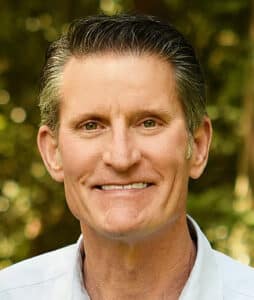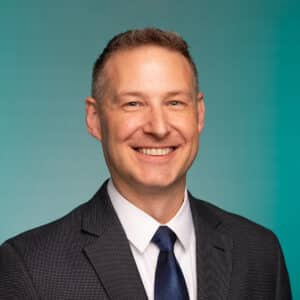Community Education Government
Peninsula School Board Position 5 | Longtime incumbent vs. first-time candidate
Longtime Peninsula school board member David Olson faces Jonathan Appleton, a political newcomer, in the race for District 5 director.
Olson, a Navy veteran and retired defense contractor, was elected to the school board in 2013. He ran in 2024 for state Superintendent of Public Instruction, squaring off against incumbent Chris Reykdal.
Olson ran on a platform of academic rigor, fiscal stability and conservative values, often in stark contrast to Reykdal’s progressive stance. Reykdal won with 52.77 % of the vote to Olson’s 46.63 % statewide. Olson won in Pierce County 51.87% to Reykdal’s 47.54
In the current race for Peninsula school board, Olson stands on his record and cites the district’s regional reputation.

David Olson
“Serving on your school board has been an honor,” he says in the Pierce County Elections voter’s pamphlet. “Under our leadership, PSD continues to be one of Washington’s top school districts! I am very proud of the Peninsula School District, and I would greatly appreciate your vote.”
Appleton, in his first run for elected office, is the parent of children in the school district and a volunteer at his children’s school. He says a key concern is “how children in our community are being impacted by bullying, intimidation, harassment and discrimination.” He calls for improved transparency and communication.
Appleton adds, “I respectfully ask for your vote to bring a fresh, engaged parent’s voice to our school board.”
Candidates responded by email to three questions from Gig Harbor Now. Their responses have been lightly edited and are given in the order that candidates appear in the voter’s guide.
Fiscal crisis looming
Peninsula School District Chief Financial Officer Ashley Murphy has warned that district finances will be stretched to the limit year over year unless the state enacts a major funding formula revision for K-12 schools. While PSD’s budget is sustainable for now, a number of districts across the state are facing the K-12 equivalent of bankruptcy. That trend will spread barring seismic legislation in Olympia on par with the 2012 McCleary decision, Murphy predicts.
As the Peninsula school board joins other districts in lobbying for change, what specifically should they ask for? How and where should the K-12 funding formula change? How should the state secure the increased revenue required to “fully fund” public education?
Olson
“In my 12th year on the Peninsula School Board, I’ve learned a simple truth: Washington’s Constitution says educating our kids is the state’s paramount duty. If something is “Basic Education,” the state should pay for it — so your local property taxes don’t have to backfill the gaps.”
Local levies patch funding gaps because the state’s “Prototypical Funding Model” for schools is outdated, Olson said. He has “pushed for years to overhaul it,” including funding for special education, transportation and MSOC (day-to-day operating costs).
“What I’m asking the Legislature to do — plain and simple:
- Staff the schools we actually run today. By funding realistic levels of nurses, counselors, psychologists, social workers, paraeducators and safe class sizes/planning time — not a model from years ago.
- Finish Special Education fixes. Keep the cap off, set funding that matches real services, and move safety-net dollars faster so help arrives when students need it.
- Fix Transportation. Use a straightforward, cost-based system that fully covers required rides — special education, homeless, foster, and rural routes — and treat transportation as basic education.
- Cover operating costs (MSOC). Tie dollars to real prices — fuel, utilities, curriculum, technology, insurance — so we don’t cut programs just to keep the lights on.
- Pay people fairly across regions. Update regional pay with current wage data and add small-district/rural adjustments so every community can hire and keep great staff.
“Last year, when I ran for Superintendent of Public Instruction, I made this case statewide — including fixing STARS (the transportation allocation system) and other rules that reward some ZIP codes over others. Peninsula loses under that setup; it needs to change.
“How to pay for it: Keep education-directed revenue in place, close ineffective tax breaks, and keep the state levy aligned to fully fund basic education — leaving true “extras” to local choice.
“I will continue to advocate to raise the state’s floor so every child — no matter their ZIP code or needs — gets a fully funded public education. I’ll keep pushing until that promise is kept.”
Appleton
“This crisis will require a lot of partners across the state to come together and share ideas.”
He says the current limit of 1 % growth for funding “does not come close to keeping up with inflation, and our education system cannot stay afloat.”

Jonathan Appleton
“The recent passage of House Bill 2049 included the creation of a school equity funding working group. I have been invited to be part of this working group to help bring recommendations around solving our state education financial crisis to our legislators. The subcommittee I am part of is focused on reviewing how to best handle problems of equity and funding, and if Washington may better serve its students by transitioning away from our prototypical school funding model to a weighted student funding model as many other states have done. I am eager to help be part of the planning and recommendations in this key area for our future.
“For the more immediate needs, I believe school boards should come together to lobby the state to reduce the threshold to pass local school construction bonds from 60% to 50%. This would allow school districts to maintain first class campuses. Peninsula was able to pass their bond in 2019, but a simple majority makes sense for our community to continue updating facilities for our students.
He says funding formulas for staffing especially need an update. “For example, our current prototypical model allows for 1 school nurse for every 962 K-6 students, (less than half a nurse at each of our elementary schools), 1 teacher librarian for every 1,147 high schoolers, and 1 psychologist for every 27,000 7-8 graders. These allocations are inadequate for students here in Peninsula and across the state.
“I also support more local control at the district level on the appropriation of approved levy funding, to allow our CFO to directly address the specific needs in our district. Overall, this is a state-wide crisis, but I look forward to helping be part of the solution to this difficult problem.”
Equity and inclusion
The district’s strategic plan states as one of its goals an equitable and inclusive learning environment. “We will ensure an inclusive community and culture where everyone is safe, valued, respected, and finds a sense of belonging,” the plan states.
What grade would you give the district on meeting this goal? Where is PSD excelling? Where is it falling short? What should be done to address the shortfalls?
Appleton
“If our district was doing well in this area, then the HIB investigation and Community Task Force studying discrimination in our schools that took place earlier this year would have shown significantly better results. The conclusion was that this problem is years overdue, our policies need to be updated (which they have since), and there is a lack of accountability and consistency across all PSD schools.
“Where are we excelling? Our recently updated policies on Nondiscrimination, Social and Emotional climate, and Prohibition of HIB policies are a good start. Also, it was a great idea to get the student athletes at the rival high schools together before the school year started for team building, socializing, and building community. The immediate positive results were evident at the recent Fish Bowl football game, where there was a lot more positive and healthy competition between the rival high school players, cheerleaders and fans.
Where is it falling short? Our next student survey around sense of belonging will be a good indicator. The last survey in early 2025 showed only 32% of students felt a sense of belonging, and nobody should be happy with these results. Also, we will need to monitor the results of the new HIB portal to track the progress of resolutions of complaints submitted.
We, as the board, need to hold the superintendent accountable for improved results, and ensure she is holding each principal accountable for improving the culture and environment in each school. The great news is that I believe our community is overwhelmingly on board with helping create a more equitable and supportive environment for all students.”
Olson
“As the longest-serving member of the Peninsula School Board, I’m proud of our progress — and honest about where we must do better. Our Strategic Plan promises an inclusive, welcoming school experience for every student. I’d give us an A- on that goal: strong work, with room to grow.
“Here’s why. We’ve put real student voices at the table. We seat student representatives on the school board. We created a Superintendent Advisory Council with students and staff, a Student Athlete Leadership Council to promote sportsmanship and civility, and we host regular student/staff focus groups. Our schools offer many ways to belong — clubs, sports, choir, band, drama — so every student can find their place.
“Last year, at the board’s direction, we completed a full, public review of our Harassment, Intimidation, and Bullying (HIB) policies and procedures. We began with a public study session, formed a HIB Task Force that included community members, and adopted a clearer, more effective process presented to the community and the board earlier this year. That work matters because every child deserves to feel safe and respected at school.
“Where have we fallen short? Communication. Too often we let a few loud voices set the story while we stayed quiet. That’s on us. Families shouldn’t have to dig to learn what’s going well, what needs work, and what we’re doing about it.
“Here’s what I’ll push for next year:
- Publish a simple quarterly Belonging & Safety update — plain-English, numbers on HIB reports and timelines, climate survey trends, and participation in clubs, arts, and athletics.
- Implement one clear HIB workflow in every school, with timely follow-up to families.
- Ensure consistent discipline with equity checks so outcomes are fair across all schools.
- Elevate student voice by convening an annual Student Congress that reports recommendations to the board.
- Proactively myth-bust hot topics and celebrate student wins.
“Bottom line: We’re on the right track, and I’m committed to finishing the job — so every student in PSD feels safe, valued, respected, and knows they belong.”
Board transparency and community engagement
The Peninsula school board has been criticized during public comments at its meetings for poor community engagement and lack of transparency. The board in recent months has given statements on issues of high community interest and it has begun hosting town hall-style study sessions.
What else should the board do to build trust with parents, staff and community members?
Olson
“I want to start by thanking our community for passing the most recent levies and capital bond — all with over 60% — showing a tangible expression of support for our school board and district.
“School board meetings are business meetings. They’re essential for voting, budgets and accountability — but they are not the best place for real, face-to-face conversations. That’s why we added town-hall style study sessions where we sit down with parents, staff, and neighbors and answer whatever is on your mind. We’re also taking meetings on the road — holding sessions across the district so families on the Key Peninsula and elsewhere aren’t asked to do all the driving.
“Transparency isn’t new for us. Our entire budget, curricula, superintendent goals and evaluations, and the full school calendar are public on the district website. Board members, the superintendent and executive staff are out in the community — Rotary, Kiwanis, Chamber of Commerce Board and local nonprofits — because listening doesn’t only happen at the dais.
“Engagement is more than a microphone at a board meeting; it’s a two-way, continuous conversation. I’m committed to doing the work, showing the receipts and reporting back regularly. If we keep listening, follow through and communicate clearly, we’ll earn and keep the community’s trust.
Appleton
“I agree these town halls are a great idea. To rebuild trust, I believe the board also needs to visit the schools in-person to hear first-hand how things are going.
“In my discussions with educators throughout the district, many have said they have not been visited by board members, and I plan on visiting schools and listening to the concerns of our educators.
“I have 20+ years of leadership experience and team building in my career, in 10 different states, and across every socio-economic environment. I believe leaders have a responsibility to listen to people’s concerns from each unique part of our community, as the needs and concerns at Evergreen Elementary may be very different than Gig Harbor High School. Equal consideration must be given to all parts of our district, from downtown to the edges of the KP (Key Peninsula).
“Change-management is a critical area of communication in any organization, and there needs to be considerable focus in this area for the board when holding the superintendent and district employees accountable for rolling-out changes and updates. ‘How’ change is communicated is often the most important part. Parents, students, and educators deserve much better than the reactive approach we have seen this year. I believe we need a proactive approach. My personal experience in this area is a much-needed addition to the board.”

